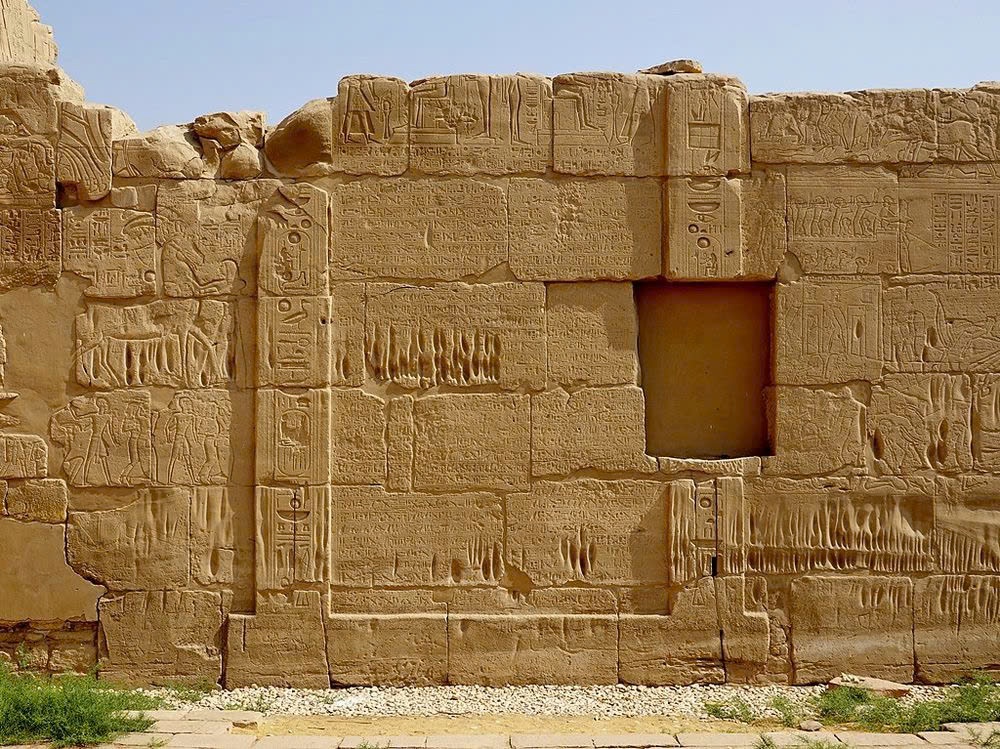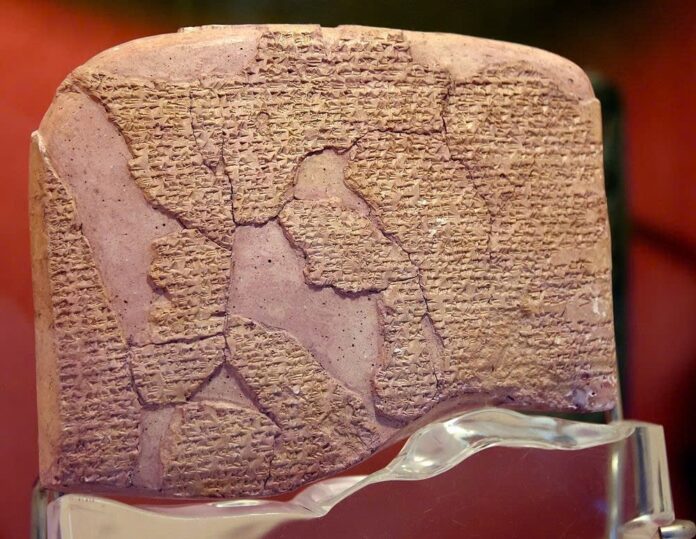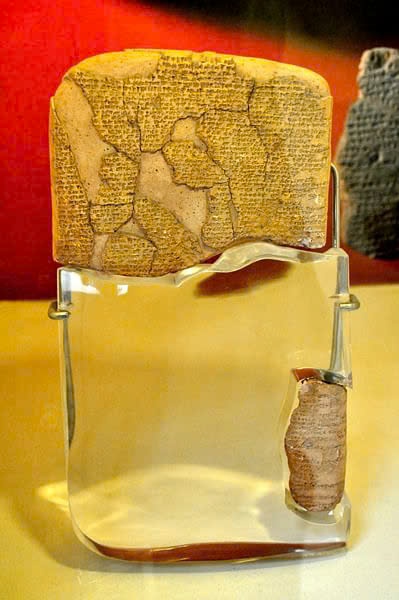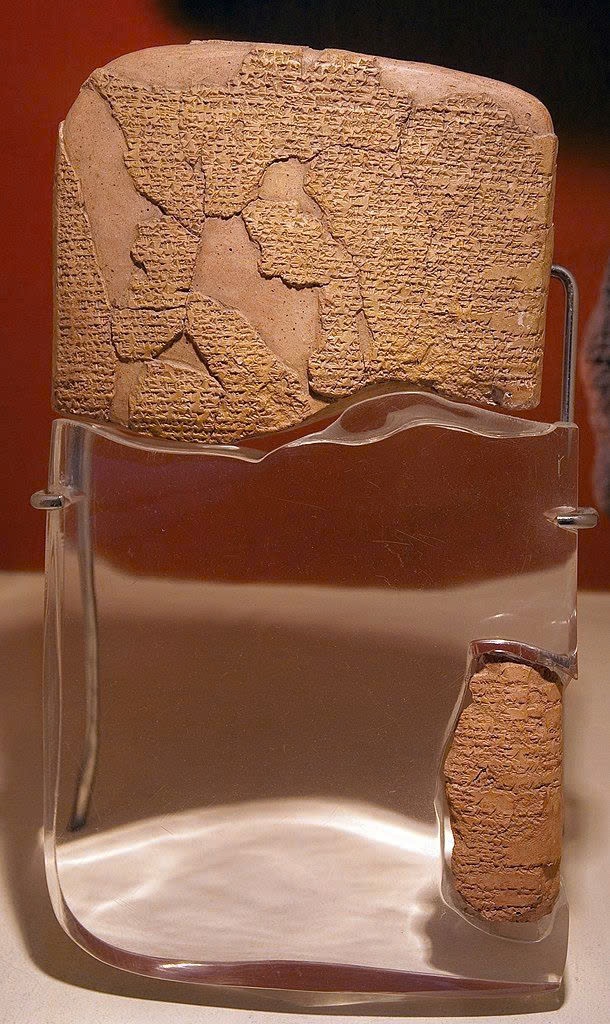Uncovering the Secrets of the Egyptian-Hittite Peace Treaty
In the heart of Egypt, near the ancient city of Luxor, the walls of the magnificent Temple of Karnak and the temple of Pharaoh Ramesses II in Thebes hold a remarkable secret. Etched into the ancient stones are hieroglyphic inscriptions that describe a great battle against the “Great King of Khatti” and the peace treaty that followed. For centuries, these inscriptions remained a mystery, until the groundbreaking translation efforts of Jean-François Champollion in the early 19th century ignited a Western fascination with the wonders of Ancient Egypt.
As scholars delved deeper into these inscriptions, they identified the “Great King of Khatti” as the ruler of the Hittite civilization, an ancient power that once dominated central Anatolia, modern-day Turkey. This discovery set the stage for an extraordinary archaeological breakthrough that would forever change our understanding of ancient diplomacy.

The Hittite Tablets: A Treasure Trove of Diplomacy
In 1906, German archaeologist Hugo Winckler made a stunning discovery in the ruins of Boğazkale, Turkey. Excavating the ancient Hittite capital of Hattusa, Winckler unearthed a treasure trove of over 10,000 clay tablets documenting the diplomatic activities of the Hittite Empire. Among these tablets, three stood out as truly remarkable – they contained the text of a treaty that matched the inscriptions found on the Egyptian temples.
Winckler immediately recognized the significance of his find, describing it as a “gift from the fairies.” The tablets provided the Hittite version of the treaty, offering a unique opportunity to compare both sides of this ancient diplomatic agreement and unravel its secrets.
The World’s First Recorded Peace Treaty
The Egyptian-Hittite peace treaty, also known as the Treaty of Kadesh, is now recognized as the world’s first recorded peace treaty. Signed around 1258 BC, this landmark agreement aimed to end centuries of conflict between the two superpowers of the ancient world over control of the strategically important eastern Mediterranean region.

A Diplomatic Masterpiece
The treaty’s contents reveal a remarkably sophisticated approach to international relations, one that resonates with modern diplomatic practices. Both the Egyptian and Hittite sides pledged brotherhood and peace, agreeing to:
- Refrain from aggression against each other
- Repatriate political refugees and criminals
- Provide mutual assistance in suppressing rebellions
- Offer military support in case of external attacks
The document even included a mutual defense clause, demonstrating a level of diplomatic complexity that would not be out of place in contemporary international agreements.
Divine Witnesses and Consequences

To emphasize the gravity of the treaty, both parties called upon their respective gods as witnesses. The text warned that any violation of the agreement would incur divine punishment, while adhering to its terms would bring blessings of health and prosperity. This invocation of the divine underscores the profound importance the Egyptians and Hittites placed on their diplomatic accord.
A Legacy of Peace
The Treaty of Kadesh ushered in a period of peace and cooperation between Egypt and the Hittite Empire. Ramesses II, the Egyptian pharaoh who signed the treaty, redirected his energies towards grand building projects, including the famous Abu Simbel temples. There is even evidence suggesting that he sought to strengthen ties with the Hittites through a diplomatic marriage.
Preserving Ancient Diplomacy
While the original silver tablets of the treaty have been lost to time, the clay copies discovered by Winckler in Hattusa have survived. Today, visitors can view two of these tablets at the Museum of the Ancient Orient in Istanbul, with a third on display at the Berlin State Museums.
In a fitting tribute to its historical significance, a copy of the Treaty of Kadesh holds a place of honor at the United Nations Headquarters in New York City – a powerful reminder that the pursuit of peace is as old as civilization itself.

Conclusion: Lessons from the Past
The Egyptian-Hittite peace treaty stands as a testament to the enduring human desire for peaceful coexistence, even in the face of centuries of conflict. Its sophisticated diplomatic framework, invocation of divine authority, and lasting legacy of cooperation offer valuable lessons for modern international relations.
As we navigate the complexities of the 21st century, the story of the Treaty of Kadesh reminds us that the quest for peace is a timeless endeavor, one that transcends the boundaries of time and culture. By studying and learning from the diplomatic triumphs of the past, we may find inspiration and guidance in our own pursuit of a more peaceful and prosperous future.

